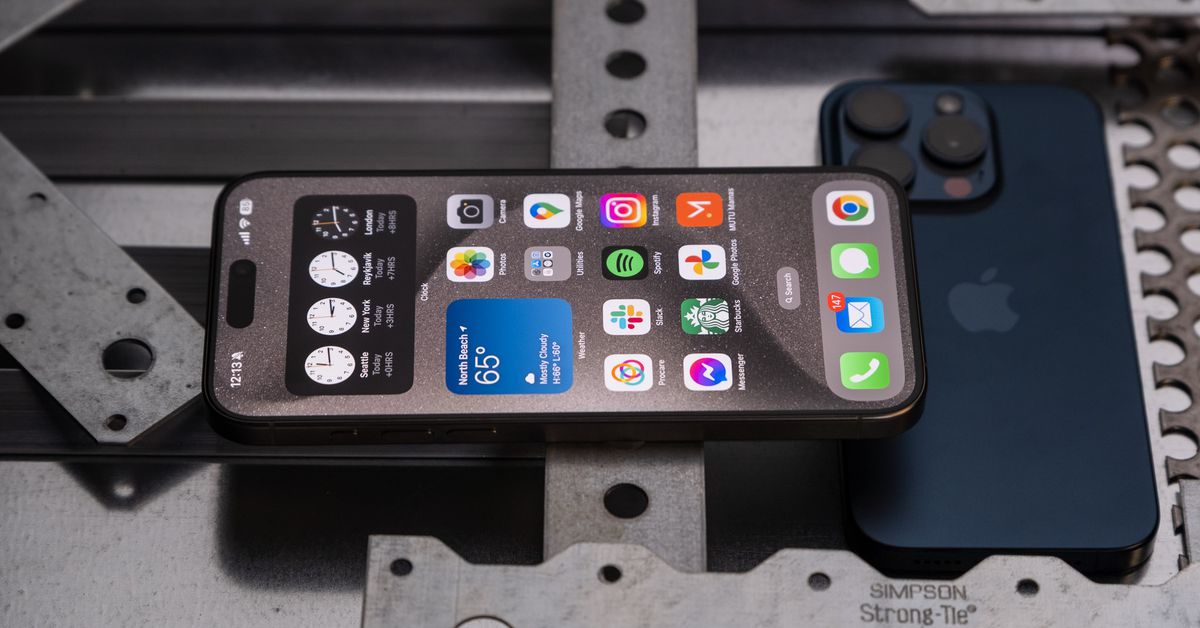I though “failure” was an absolute term? They obviously aren’t done developing yet, but that doesn’t mean they never will.
I bet they have working prototypes and it comes down to something like power draw being too high. They probably want something that’s at least on par with what Qualcomm has.
And even when the first “retail” version is done, I find it highly unlikely that they put it in the flagship iPhone first. The modem having a bug or other weird behavior in their most popular product would be detrimental. They’ll test it in cellular iPads, or maybe even in MacBooks. If they test it on an iPhone, it’ll probably be on the iPhone SE first.
And after all that, they’ll put it in their flagship iPhones.
It’s a “when”, not an “if”.
Fuck the Verge - they’re on a clickbait march this week.
deleted by creator
This is the best summary I could come up with:
According to a detailed report from the Wall Street Journal, Apple’s attempt to develop its own in-house 5G modem has been stymied by issues resulting from the iPhone maker underestimating the complexity and technical challenges of the task, and a lack of global leadership to guide the separate development groups siloed in the US and abroad.
“They hate Qualcomm’s living guts,” says Edward Snyder, a wireless industry expert and managing director of Charter Equity Research, in comments reported by the WSJ.
After settling its dispute with Qualcomm in 2019, Apple quickly acquired Intel’s smartphone modem business, along with a few thousand engineers to help advance its development efforts.
That’s why Apple extended its modem deal with Qualcomm — which would have expired at the end of this year — just days before the iPhone 15 was announced.
And while some have lauded Huawei’s HiSilicon chip design business for beating Apple to the punch with the apparent development of its own 5G modem in China’s Mate 60 Pro, lab tests show that Huawei’s chips consume more power than competitors’ and cause the phone “to heat up” which is bad for performance.
Apple’s custom modem work continues, and Bloomberg’s Mark Gurman suggests we’ll likely see them gradually roll out before the current Qualcomm deal expires in 2026.
The original article contains 381 words, the summary contains 212 words. Saved 44%. I’m a bot and I’m open source!
I don’t understand this - didn’t Intel have a working cellular modem chip before Apple bought that segment of the businesS? Sure, it wasn’t good, and Intel probably saw that it was going to be difficult but with the amount of money Apple invested in this, starting with a working product, how so they not have a working product?
I think you answered your own question. It wasn’t good. Apple isn’t willing to sacrifice battery life since it has been one of their biggest selling points on the iPhone for years. As far as why they haven’t figured it out yet. It is probably pretty difficult. Intel spent tons of money on it and couldn’t succeed. A chip maker gave up. That should tell you how difficult the process is. The 5G modem industry is basically a monopoly so there are a ton of companies that would be trying if it were easy to do.
How did Huawei do it so well if Apple and Intel struggled?
Drop support for frequency bands and older mobile standards not used in China. Don’t worry about battery life.
Works great for Huawei, no good for Apple.
No I’m talking about the 5g transmitters and receivers they sold in the USA before we banned them
Loads of companies make the tower equipment, including Huawei, Cisco, Nokia… in those cases, size, cool running and low power draw aren’t as important. Apple gives no shits about that part of the industry.
Power draw for cellular tower equipment has become a major concern and product differentiator for mobile operators. I work in telco sector.
AFAIK Apple develops their modem in Germany. The initial effort to get into this market is tremendous. After that it’s incremental improvements, but you must start somewhere.
I can’t find any reviews of the chip itself, just announcements. It is too early to say they succeeded. Also intel did make a 5G modem for phones. It just was a couple of years behind Qualcomm’s chip. There is a good chance that Huawei’s 5G chip will be the same. If you look at the phone they are going to sell with the new 5G chip, it has a main processor that is performing at the standards of two years ago. The 5G modem could be the same way. Furthermore, Huawei could be breaking patents and be fine as long as the phone isn’t sold outside of China. The main difference is that Apple doesn’t want to put a worse 5G modem in their products and can’t pretend that patents don’t exist.




